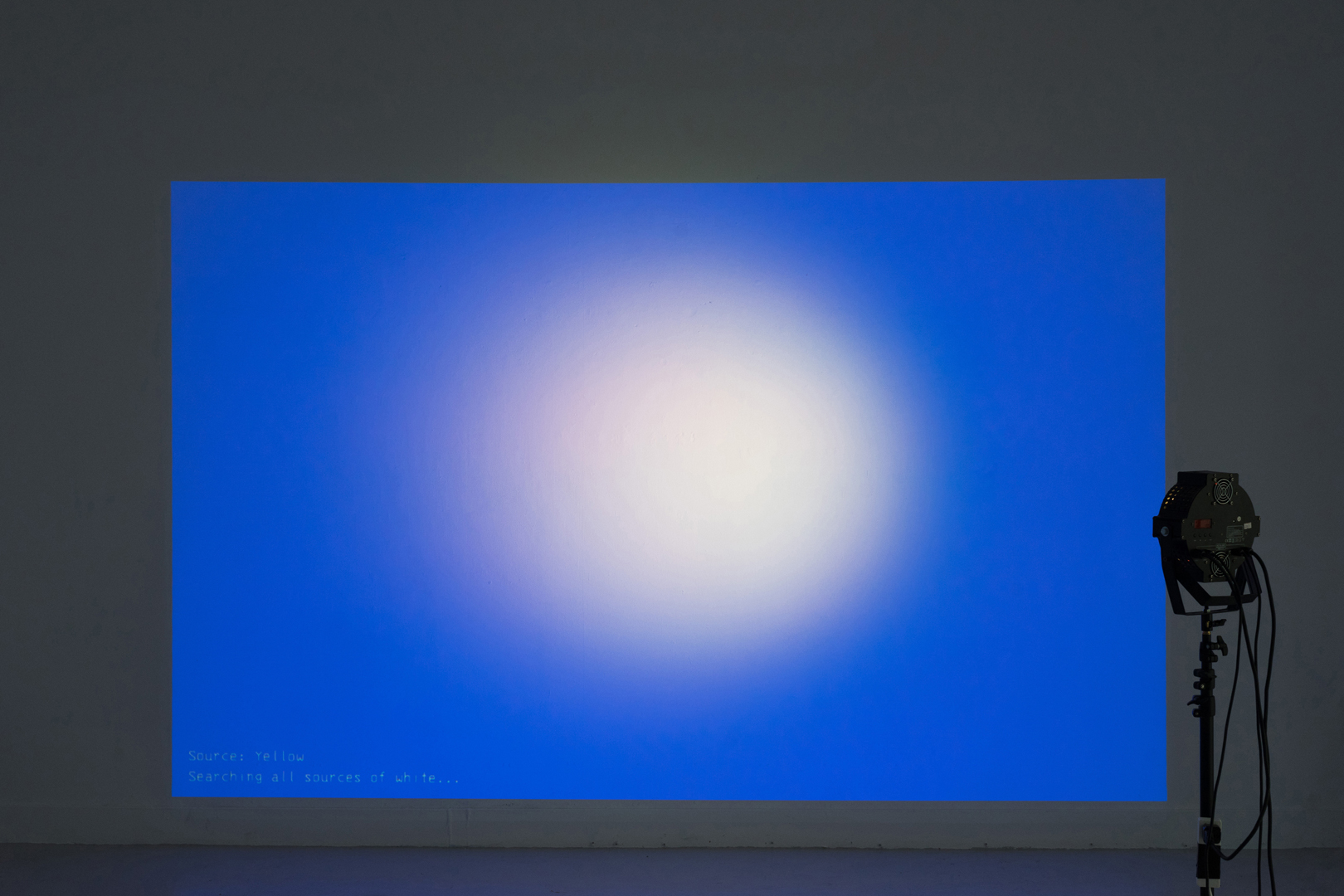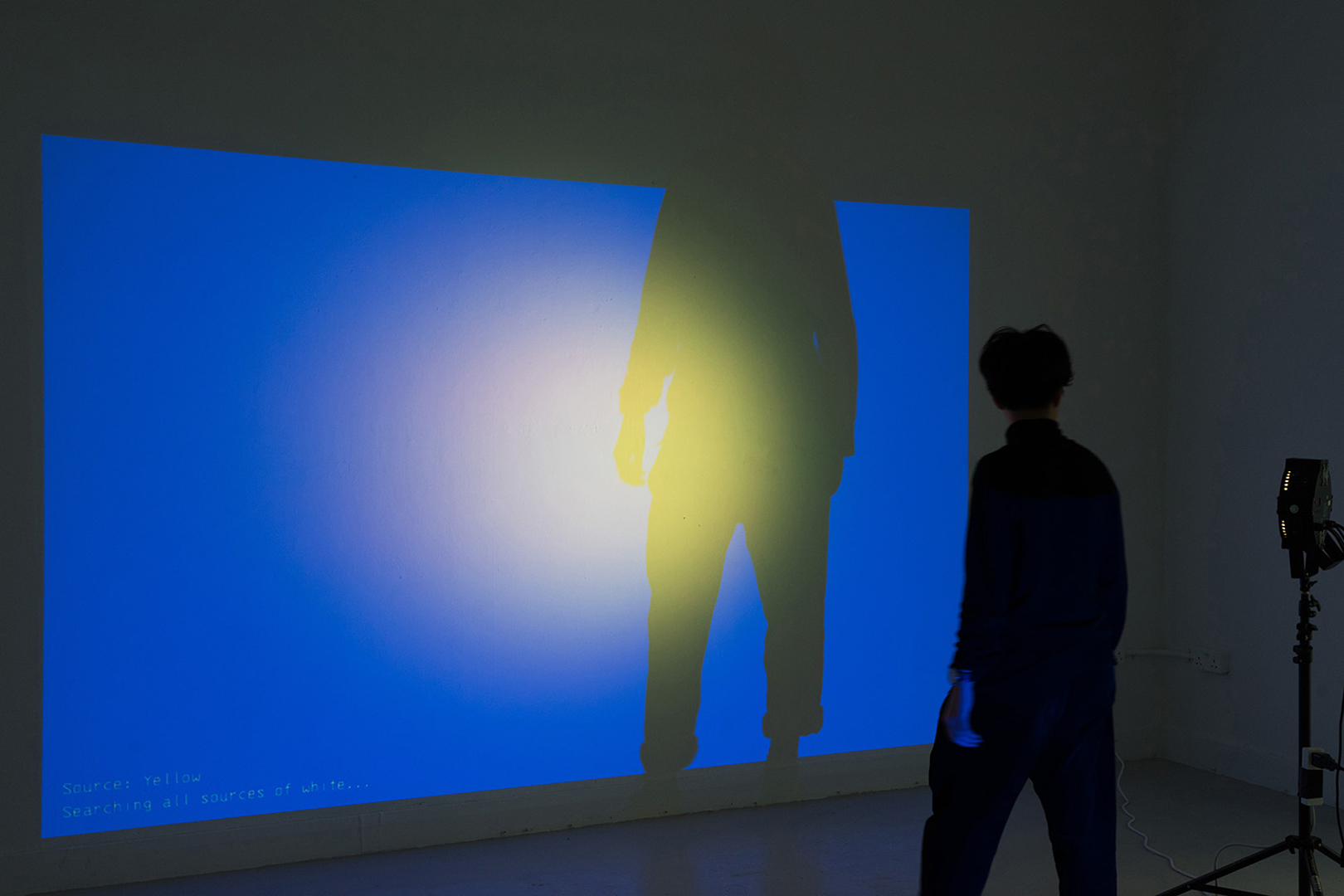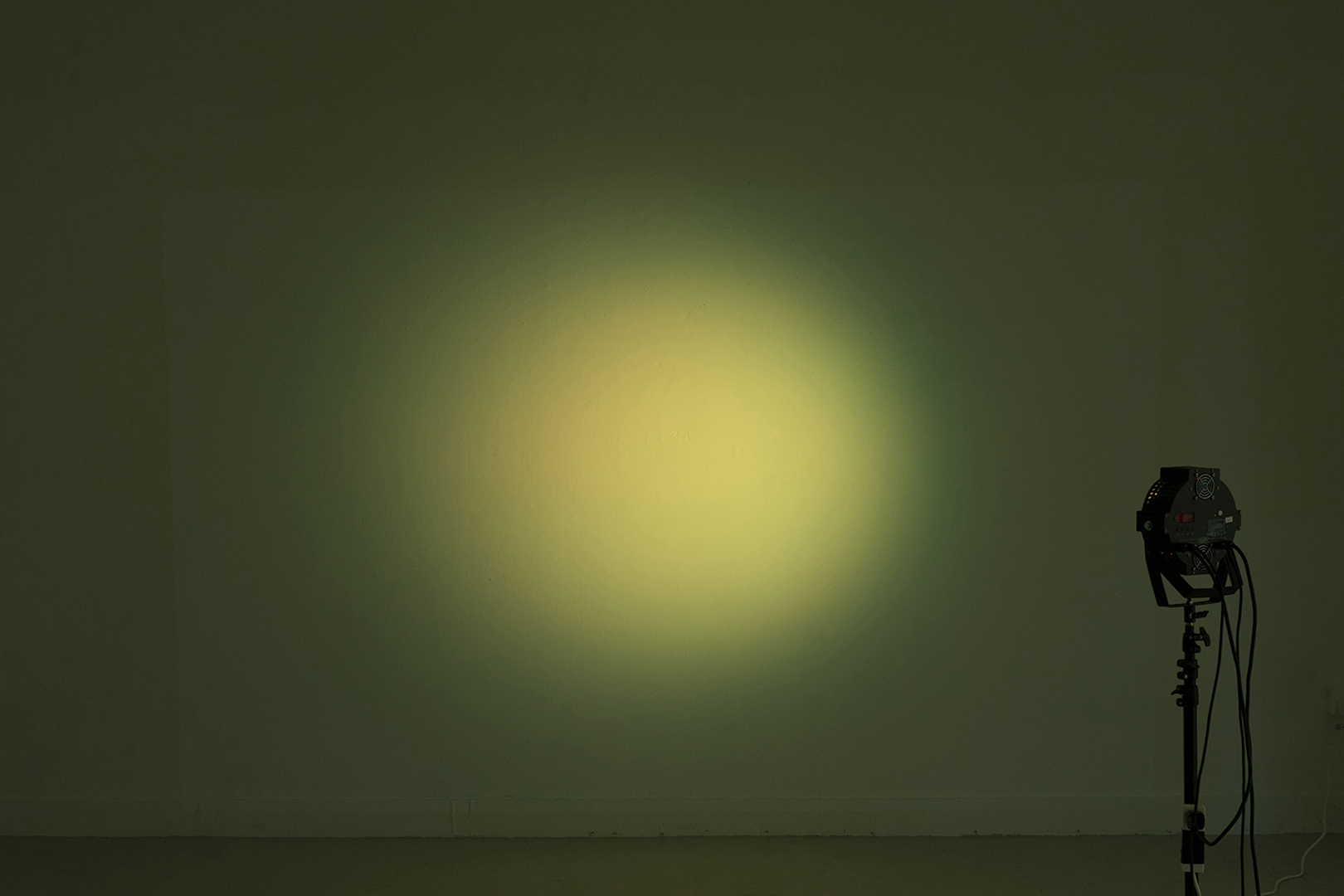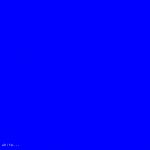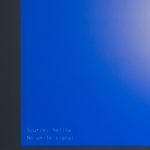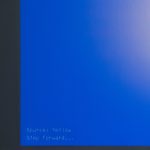Gi Wai Echo Hui: Searching All Sources Of White
Artist(s):
Title:
- Searching All Sources Of White
Exhibition:
Category:
Artist Statement:
Summary
Searching All Sources of White presents the failure in the display as the landscape. It is an interactive video installation that requires audiences’ bodily movement. It examines the idea of the limitation of seeing through the blue standby mode display and the illusion of white.
Abstract
Searching All Sources of White presents the error as the landscape. It is an interactive video installation examining the idea of the limitation of seeing and digital display devices. The projector projects a Blue screen while a white spot falls in the middle. Blue is often seen in a digital display namely default screen, calibration screen, sleep mode and ‘Blue Screen of Death’. In an exhibition setting, this work gives the impression of a failure in the display when the projector displays a blue, standby-mode. Standby is a component mode in which a system is kept readily available in case an unexpected event occurs. A system may be on standby in case of failure, shortage or other similar events.
The interaction is analogue rather than a digital. The work invites the audience body movement as a variation in the scene. The blue landscape is an illusion to the audience that the display device is having a malfunction situation. The switching text on the bottom first misleads the audience that it is a common standby mode text searching for the input source. It invites the audience to step into the projection area. When the blue light source from the projector is blocked by a body, a yellow light appears. The white spot in the middle is never a white light source. The white results from the addition of complementary-coloured light source – yellow and blue. In the RGB colour system, mixing the primary colour blue with the complementary colour yellow would produce the colour white. There is a limitation of the human eyes which cannot analyse a mixture of complementary-coloured light, results in perceiving it in white. The malfunction scene and the illusion of color in human eyes encourage the audience to think about what they perceive through seeing.
Technical Information:
There are two main pieces of equipment need to be installed. The projector should be placed on the floor on the end of the space, giving the far distance from the projection wall. The LED light par should be hanged from the ceiling and spotted at the middle of the projection. After setting the LED into yellow colour, the light intensity has to be controlled carefully to obtain a spotted area where human eyes perceive as white.
Process Information:
Searching All Sources of White makes use of fundamentals of the display to question the fundamentals of seeing. Standby mode is very common in a display device. When electronic devices are receiving power but not running, they are in the standby mode. ‘Untitled’ gives the impression of an undefined quality. The lack of character in the standby mode shares a similar idea with ‘Untitled’. The audience will easily overlook the projected video as a sleep mode by instant intuition. The projector displays this ‘untitled’ mode, while unties our deep-rooted perception towards a certain scene. We take the way we see the world for granted. But our experience of the world is shaped in part by our visual system. Impossible colours, which are sometimes called non-physical colours. According to the opponent-process theory, no colour could be described as a mixture of opponent colour. The combination of yellow and blue in this work is an example of impossible colours. The work reminds the audience to re-consider our perception and experience of the visual world.
First, I turned the error into an artwork to trick the audience. Searching All Sources of White presents the error as the landscape. It is an interactive video installation examining the idea of the limitation of seeing. The projector projects a blue screen while a white spot falls in the middle. Blue is often seen in a digital display namely default screen, calibration screen, sleep mode, and ‘Blue Screen of Death’. In an exhibition setting, this work gives the impression of a failure in the display when the projector displays a blue, standby-mode. Standby is a component in which a system is kept readily available in case an unexpected event occurs. A system may be on standby in case of failure, shortage, or other similar events.
Secondly, the audience’s body also becomes a variation in the artwork and helps demonstrate the limitation of the human eye. The interaction is analogue rather than digital. The work invites the audience’s body movement as a variation in the scene. The blue landscape is an illusion to the audience that the display device is having a malfunction situation. The switching text on the bottom first misleads the audience that it is a common standby mode text searching for the input source. It invites the audience to step into the projection area. When the blue light source from the projector is blocked by a body, a yellow light appears. The white spot in the middle is never a white light source. The white results from the addition of complementary-color light sources – yellow and blue. In the RGB color system, mixing the primary color blue with the complementary color yellow would produce the color white. There is a limitation of the human eyes which cannot analyze a mixture of complementary-color light, resulting in perceiving it in white. The malfunction scene and the illusion of color in human eyes encourage the audience to reflect on the limitations in the spectrum of human visual perception.
The idea of the work was accidentally developed during that time when I was setting up one of my artworks. My light stand was broken so I am trying to have an alternative device to replace the light sources. Later, I noticed the projector in the venue was projecting a highly saturated blue light and it could be a perfect alternative to a light source in my work.
Other Information:
Inspiration Behind the Project
The inspiration for this project initially started with my interest in the error in technological devices. Blue in technology is often related to an error, such as a blue screen and loading screen. At the same time, I was exploring the properties of projectors. Projectors are a device for displaying, a source of light, a ‘seeing’. The blue screen informs the audience there is a bug of failing to display. Moreover, blue screens in galleries usually indicate that something is wrong and broken, hinting at a limitation of the technology. However, in this project, I tricked the audience to see my project as a blue screen that failed to display but in fact, it is an artwork and a landscape. The horizontal format and the color of blue is a typical subject matter in art.
Key Takeaways for the Audience
I would appreciate it if the project reminded the audience to question what the technological device is displaying for them. And also think about the artificial light source produced by the digital display instead of only look at the image produce by those devices.

